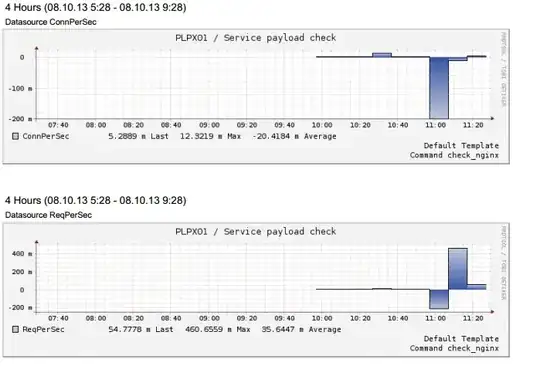I'm currently looking at my Nagios metrics, and especially on my WebServers and I suddently noticed that sometimes, I've a negative amount of Request per second and other metrics, how it is possible??
I though that Request per second or Connection per second could only be positive or equal zero.
What's going on there? Is that negative value mean that the webserver reuse an existing connection throught keepalive or use cache data?
If someone could explain me those metrics, it would be great.
